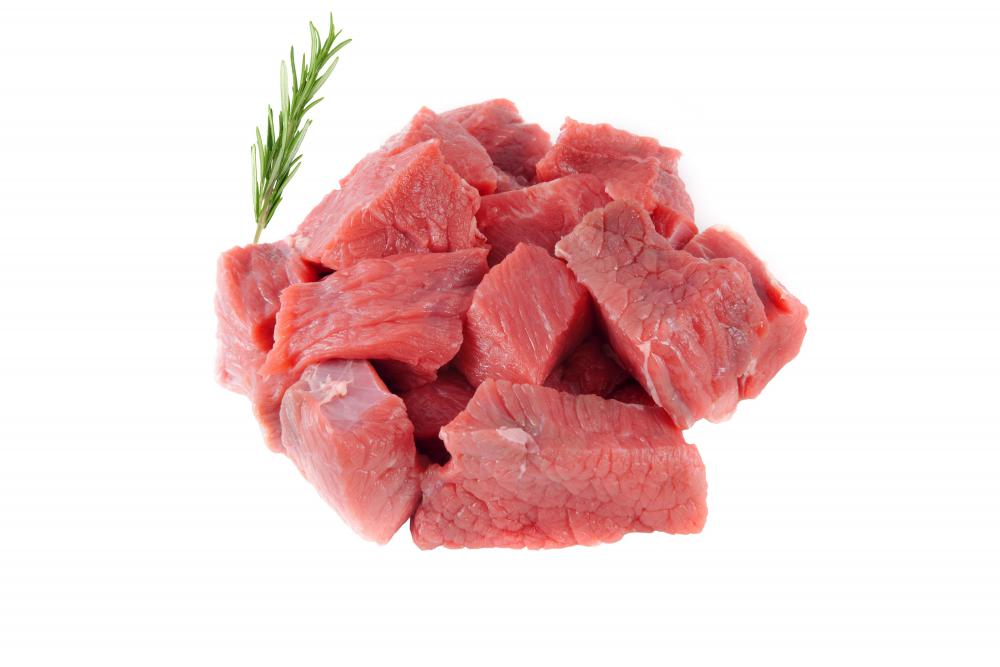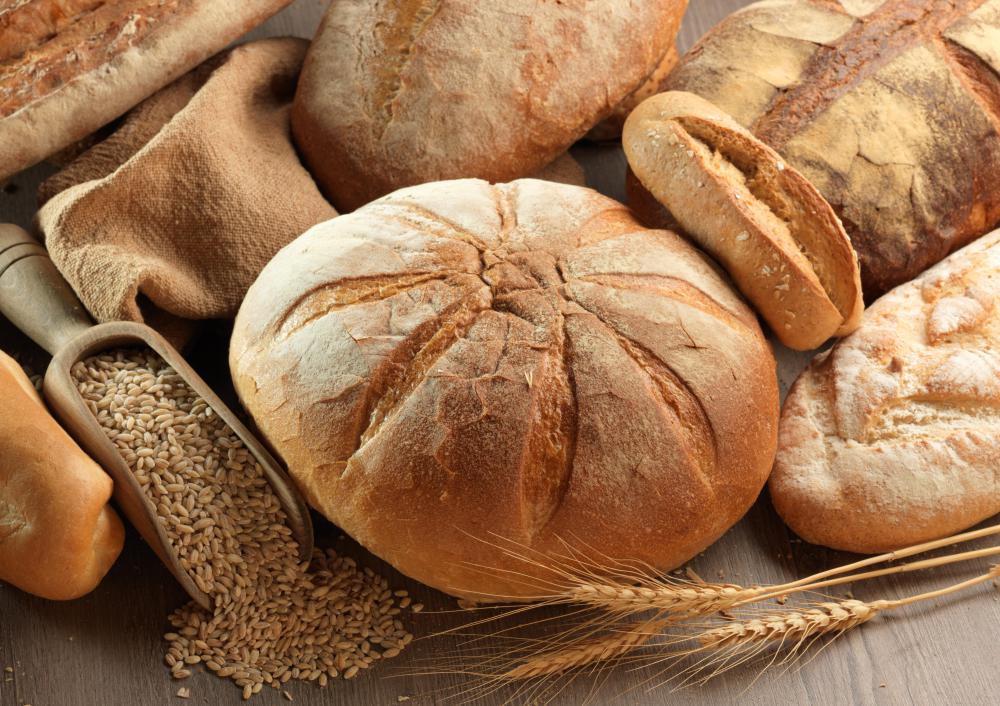At TheHealthBoard, we're committed to delivering accurate, trustworthy information. Our expert-authored content is rigorously fact-checked and sourced from credible authorities. Discover how we uphold the highest standards in providing you with reliable knowledge.
What is Sodium Diacetate?
Sodium diacetate is a free flowing, acidic sodium salt widely used as food flavoring, preservative, and pH buffer. It consists of acetic acid and sodium acetate, and has the chemical formula symbol NaH. As a food flavoring agent, this compound is most often used to impart a vinegar flavor in snacks, breads, and soups. As a preservative, it can effective in preventing the development of several mold strains and is also used as an antibacterial agent to prolong the shelf life of many food types. Recent studies also suggest that it is an effective microbial inhibitor and pH regulator in meat and poultry products.
This crystalline compound is made up of equal parts of sodium acetate and acetic acid. The sodium acetate crystal lattice locks in the free acetic acid molecules until the compound is broken down in a solution. This characteristic masks the very sharp acetic acid odor while releasing the flavor when the compound is wet out during use. It is typically available as a free flowing, dust free salt that requires airtight storage to prevent degradation due to acetic acid loss.

Sodium diacetate is added to a host of food products for its distinctive vinegar taste. These products include savory cookies, chips, sauces, ketchup, food coatings, and condiments. It also improves the shelf life of these products by inhibiting bacterial development. The compound is approved by both the U.S. Food and Drug Administration and European food control authorities and is generally accepted worldwide as the de facto source of vinegar flavoring.

This compound also sees wide spread use as a baking industry additive. It is often included as a mold inhibitor and general conditioner in bread dough, allowing for a longer shelf life for the finished product. Another baking and confectionery use for it is as an anti-rope additive. Rope is commonly caused by bacteria in dough that causes clogging of machinery and renders the dough unsafe for consumption. Sodium diacetate destroys this bacteria.

It is also used as a preservative for red meat and poultry products. The compound is an efficient inhibitor of bacterial strains, such as C. botulinum and L. monocytogenes, that are often encountered in these products. It also serves as an acidity control additive in fresh meat when applied as a buffer agent. Other pH control uses include the foam production and photographic industries.

This useful chemical is also applied in the agronomy industry as a bacteriostatic agent to preserve and improve bioavailable nutrient levels in livestock feeds such as hay. In addition, it is used in the pharmaceutical field as a renal dialysis blend ingredient. Industrial grades of the compound can also be used as buffers and stabilizing agents in the petroleum industry, making it a truly versatile and valuable commodity.
AS FEATURED ON:
AS FEATURED ON:















Discussion Comments
NaH(C2H3O2)2. There. I knew I could do it. And it is most certainly safe for human consumption. Now look up "Hydrolyzed Soy Protein". HSP = MSG.
@turkay1: Sodium diacetate is 100 percent safe for human consumption. Chow down. --a chemistry PhD student
Hi anamur and turkay1. Kudos indeed! The inquiring thought and shared knowledge generated by this article makes it that much more valuable. Thanks for the comments!
Sodium diacetate is not toxic or anything, but a friend of mine said that it can cause irritation to the eyes and skin if you come in contact with it. He deals with different chemicals at work. It's not something most people will ever come across. People who deal with it always wear safety goggles and proper clothing and gloves, though.
I just want to put it out there because I heard that high school kids experiment with things like sodium acetate at home. That is also a chemical that can cause irritation. It's always best to take the right precautions.
@turkay1-- You have nothing to worry about! This is coming from a chemist, so relax!
The article says that sodium diacetate is a combination of acetic acid and sodium acetate. You are right, acetic acid is the main ingredient of vinegar and sodium acetate is another fancy word for the salt in acetic acid.
So, sodium acetate is safe as well and it's not even hard to make. You can make it at home yourself with vinegar and some baking soda.
So, sodium diacetate is just a natural way to preserve food. It has been allowed for use both by American and European authorities. It's not too different from making pickles at home with vinegar and salt. Humans have had natural ways to preserve food for a long time, don't let every fancy name fool you into thinking that it is a synthetic and dangerous element. Although there may be exceptions out there.
I agree with you that these names are foreign to the average consumer. But it would also be impractical and not even possible to explain each ingredient on the label. Can you imagine it saying "sodium diacetate (acetic acid [vinegar]) and sodium acetate (salt of acetic acid)" on the label? That would be even more confusing!
But kudos to you for paying attention to what's in your food and being a health conscious consumer.
I get uneasy when I see words I don't understand in the ingredients list and sodium diacetate is one of them. Especially when things are produced in the lab and put in foods as preservatives, I feel like I'm eating something that shouldn't be in there.
Just to make myself feel better (and have my favorite snack- salt & vinegar potato chips), I tried to find online if there was a study done with sodium diacetate.
Well, I couldn't find anything, I only saw that the World Health Organization did a study on acetic acid and saw that it was safe. But that's not enough to make me feel better. I know that acetic acid is vinegar, so that's fine, but there is something called sodium acetate too. Couldn't that effect the results of the study?
I really hope that my worries are in vain so I can have some salt & vinegar potato chips again.
Post your comments